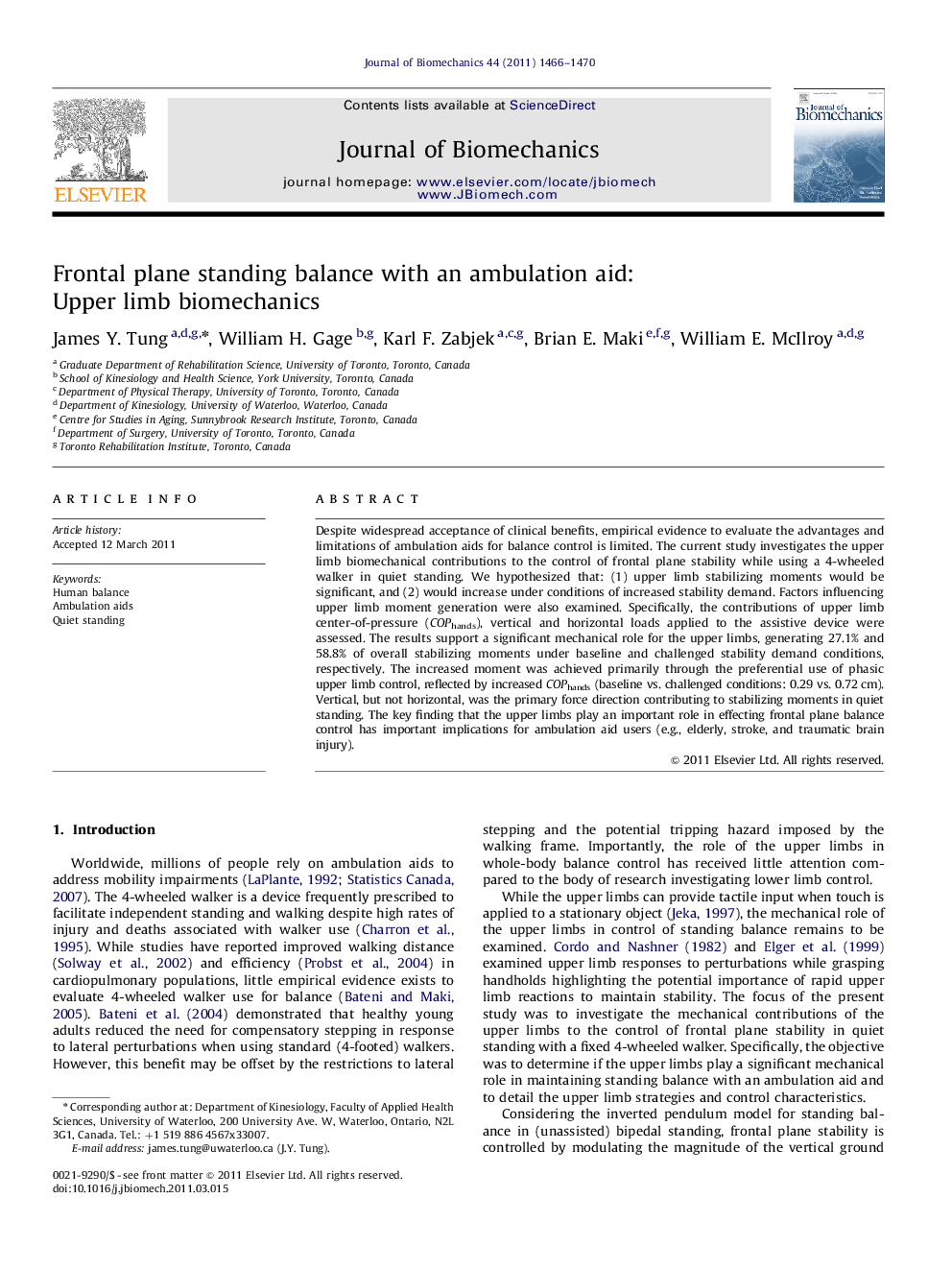| Article ID | Journal | Published Year | Pages | File Type |
|---|---|---|---|---|
| 10433409 | Journal of Biomechanics | 2011 | 5 Pages |
Abstract
Despite widespread acceptance of clinical benefits, empirical evidence to evaluate the advantages and limitations of ambulation aids for balance control is limited. The current study investigates the upper limb biomechanical contributions to the control of frontal plane stability while using a 4-wheeled walker in quiet standing. We hypothesized that: (1) upper limb stabilizing moments would be significant, and (2) would increase under conditions of increased stability demand. Factors influencing upper limb moment generation were also examined. Specifically, the contributions of upper limb center-of-pressure (COPhands), vertical and horizontal loads applied to the assistive device were assessed. The results support a significant mechanical role for the upper limbs, generating 27.1% and 58.8% of overall stabilizing moments under baseline and challenged stability demand conditions, respectively. The increased moment was achieved primarily through the preferential use of phasic upper limb control, reflected by increased COPhands (baseline vs. challenged conditions: 0.29 vs. 0.72Â cm). Vertical, but not horizontal, was the primary force direction contributing to stabilizing moments in quiet standing. The key finding that the upper limbs play an important role in effecting frontal plane balance control has important implications for ambulation aid users (e.g., elderly, stroke, and traumatic brain injury).
Keywords
Related Topics
Physical Sciences and Engineering
Engineering
Biomedical Engineering
Authors
James Y. Tung, William H. Gage, Karl F. Zabjek, Brian E. Maki, William E. McIlroy,
